The Memory of Babyn Yar During the Soviet Period
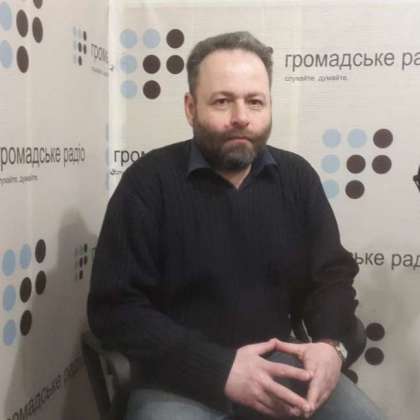
The historian Vitaliy Nakhmanovych talks about Babyn Yar in the postwar period, the Kurenivka mudslide, the 1966 demonstration, and the 2016 commemoration of the executions in 1941.
Andrii Kobaliya: Please explain to our listeners why in the Soviet Union after the Second World War there were attempts to suppress the memory of Babyn Yar. What were the plans of the Soviet government for this area?
Vitaliy Nakhmanovych: In the context of your question, it is important to note that in the Soviet Union there was no such time as “after the Second World War,” but instead there was the time “after the Great Patriotic War.” In fact, immediately after the liberation of Kyiv up until the end of the 1940s there were plans to erect a monument to those who died. The author of this project was Oleksandr Vlasov, the chief architect of Kyiv at that time. The plan was preserved, and we can take a look at it. It is a pyramid where it says, “In memory of 140 thousand killed citizens.” It is not clear where this number comes from. It is very interesting to know where all of the numbers of Babyn Yar come from.
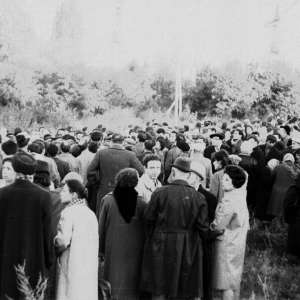 The project was cancelled in 1950. First, because Vlasov himself went to Moscow and became the chief architect of that city and there was no one else to promote the project. On the other hand, we know that after 1948 the Soviet Union began an official campaign to discredit Jews. Formally, it was “a fight with cosmopolitanism,” then “the doctor’s plot,” but in fact it was an official antisemitic campaign. The dynamics of the campaign subsided after Stalin’s death in 1953, but almost to the very end of the Soviet Union there was an antisemitic environment. Perhaps under Gorbachev it had somehow dwindled.
The project was cancelled in 1950. First, because Vlasov himself went to Moscow and became the chief architect of that city and there was no one else to promote the project. On the other hand, we know that after 1948 the Soviet Union began an official campaign to discredit Jews. Formally, it was “a fight with cosmopolitanism,” then “the doctor’s plot,” but in fact it was an official antisemitic campaign. The dynamics of the campaign subsided after Stalin’s death in 1953, but almost to the very end of the Soviet Union there was an antisemitic environment. Perhaps under Gorbachev it had somehow dwindled.
Regardless of antisemitism, Soviet ideology and propaganda envisioned that the burden of the Second World War was carried by the great Russian nation—the older brother of other nations of the Soviet Union. Other nations, according to this myth, were also involved, but their merits and sacrifices depended on their size and importance for the political life of the country. Therefore, Jewish victims could be recognized, but at the battle fronts first of all. The Soviet Union honored the soldiers, not civilians. But it was impossible that the number of Jewish victims could be bigger than, say, the number of Russian victims. Even in proportionate numbers.
These two reasons led to the fact that the memory of Babyn Yar and the Holocaust was blurred. Thus, the euphemism “peaceful Soviet citizens” was invented, and it was used everywhere where something had to be put up. It is interesting that Nazis did not shoot “peaceful Soviet citizens.” Nazis could kill Jews, Romani people, communists, nationalists, the mentally ill, political workers, and criminals, but the Germans did not shoot “peaceful Soviet citizens.” People who were never citizens of the Soviet Union could also be shot. Most nationalists were citizens of Poland.
Andrii Kobaliya: In the USSR people were trying not to talk about Babyn Yar. But was Babyn Yar present in the discourse about the Holocaust abroad?
Vitaliy Nakhmanovych: Obviously it was present in the Jewish discourse, especially in places where there was a diaspora of Soviet Jews. In other communities, the Holocaust was associated with the death camps that were located in Poland. Until the 1970s the theme of the Holocaust, even in the West, was unpopular for many reasons. When it started to be talked about, the discussion was about how the majority of Jews from Western Europe were being exterminated in the camps in Poland, although they could have also been killed in Belarus or Lithuania.
In the West a few years ago the research by the French priest Patrick Desbois became a real discovery. He invented the term “Holocaust by Bullets” as the definition of the Holocaust that took place in the USSR. Then he started to come here and talk about it. It was like telling the Indians about the discovery of America. People always knew about it here. In the West, Babyn Yar was unknown for a long time.
Andrii Kobaliya: In talking about the tragedies of Babyn Yar we can recall not only the executions of Jews during the Holocaust, but also about the tragedy that happened years after—the 1961 Kurenivka mudslide. Why did the Soviet government want to create other structures on the territory of Babyn Yar, and what were the circumstances?
Vitaliy Nakhmanovych: We have to understand one thing: from the early days of Soviet power, due to the peculiarities of communist ideology, the attitude towards burial places was completely dismissive. For a person who professed a materialist worldview, the cemetery had absolutely no meaning. For such a person, it is better to give his body to some institute. Why, for example, did cremation become so popular in the USSR?
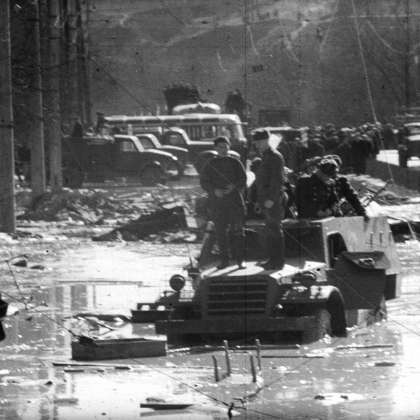
Back in 1919, there were ideas to turn the Mohammedan, two Orthodox, Jewish, military, and Karaite cemeteries into leisure parks. This was confirmed by the general plan, when the capital was moved to Kyiv in 1934. These plans were not discarded after the war. Except for the monument to those who died, Vlasov planned the complete destruction of Babyn Yar by laying roads and creating a sports park area there. For him, this was perfectly normal. On the level of rumor, it was clear to everybody back then that the destruction of Babyn Yar was meant to destroy memory.
In the 1950s they started to wash out Babyn Yar and pump in wood pulp. The tragedy occurred due to poor technology. They put a poorly constructed dam there. This is not surprising because many things in the Soviet Union were done like this. The USSR was a country of complete hackwork. The Kurenivka tragedy, which of course was known to all the people of Kyiv, could not have not happened because this is a case when high technology fell into the hands of savages and hacks. A monkey with a grenade is dangerous, isn’t it? And the Soviet Union was a country of monkeys. The system was built in a way where the stupidest, most untalented people were in power, and the talented and the smart were bullied.
Andrii Kobaliya: Let us move from the topic of the memory about the Babyn Yar tragedy to the anti-Soviet protest and commemoration of the anniversary in 1966. In one interview, your father Raphail Nakhmanovych recalled that the 1966 commemoration was organized by Emanuel Diamant. Could you tell us more about him, because in his interview it turned out that he was not talked about that much in the context of this event. Even when we read about the events of 1966, his name is almost never mentioned.
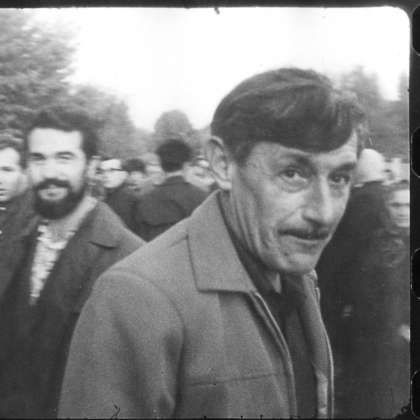
Vitaliy Nakhmanovych: This is a very interesting topic. It is a good example of how a myth is born not through a deliberate distortion of facts, but through their distortion in memory and consciousness. The general cliché is that the 1966 meeting was organized by the writer and dissident Viktor Nekrasov.
The meeting was organized by a group of Jewish Kyiv youth, which had Zionist views. Babyn Yar for them was not just a symbol of the tragedy, but also the place where the identity of Soviet Jews was formed. The meeting in 1966 was one of many. They were organized not only by Kyiv residents, but also by people from all over the Soviet Union. They were detained, they were removed from the trains, they could not buy tickets, they were arrested, and had other different problems.
In remembering the Jewish tragedy during the war, Babyn Yar was always associated primarily with the Jewish tragedy. It was finally after independence when it was remembered that many more others were also shot there. In the Soviet period, at the community level, everybody knew about the Jews. Remembering the shootings of the Jews at Babyn Yar locally and elsewhere globally was awkward for the Soviet government because it ruined the image of Jews and turned them into victims, martyrs, and so on.
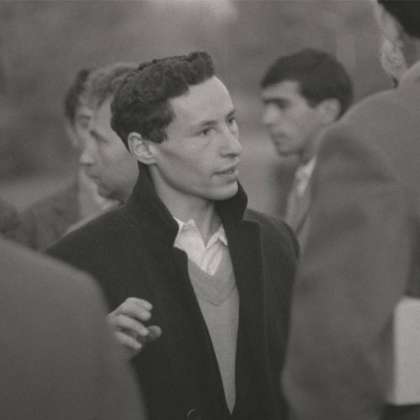
All these [young Jewish] people then later left. That is why the history of this meeting was by those who had a lot in common with such dissidents as Nekrasov and Dziuba. That is, those who remained here.
Diamant himself worked in an observatory, and later he left the USSR. He lives in Israel now. He publishes memoirs, including those about what happened in 1966 and later. They exist in another space (even though they are published in Russian) from that in which live those people who are interested in the history of Babyn Yar.
Andrii Kobaliya: You mentioned that in addition to 1966 there were also other meetings, but there are almost no references to them. It is especially hard to find information about these events for people who do not know where they can find special historical literature. Can you please tell us more?
Vitaliy Nakhmanovych: From the beginning of the 1960s in Ukraine, and not only there, Jewish communities themselves started to erect local monuments in places where Jews were killed. But nothing could be done independently. The KGB was interested in this. There is a lengthy report by Nikitchenko, the head of the USSR KGB of that time. Because the beginning of the 1960s was marked with a thaw and liberalization, the recommendation was the following: it should not be banned, but it should be taken under control. And in 1965, right before the twenty-fifth anniversary of the tragedy, there was a competition for a Babyn Yar monument in Darnytsya, where there was a prisoner-of-war camp.
There were many projects submitted for the competition, and some people sent more than one proposal, but none of the projects was in accordance with this “heroism” and that is why they shut down this competition. Therefore, it was in the air because the decision to erect a monument was there, but how to do it was unclear. The following year brought together many people. They put a stone there, and that stone was there for ten years. Afterwards the phantasmagoria started. An official Soviet meeting was held; then people came with wreaths and candles and they were trying to arrange a commemorative event of memory. They were not protesting against the government or its strategy of commemoration, but they were arrested, scattered, etc. It happened year after year. This story took place throughout the entire 1970s.
It is true that the postwar history of Babyn Yar is only now being researched and written. Now, before the anniversary, the collective monograph edited by the Canadian Professor [Paul Robert] Magocsi and the Ukrainian professor [Vladyslav] Hrynevych will be published. It has articles about the history of Babyn Yar and its memory. This is the first attempt to systematically describe what was Babyn Yar after the war and look at it from different angles.
Andrii Kobaliya: In finishing our discussion, let us step away from the tragedy and memory about it and mention that this year there will be the next commemoration of Babyn Yar, and there will be several events held from September 23-29, 2016 to mark the seventy-fifth anniversary. What events are being planned?
Vitaliy Nakhmanovych: This year the event is being organized by different organizations. The Government of Ukraine, Ukrainian Jewish organizations, international organizations, such as for instance the Canadian foundation Ukrainian Jewish Encounter have seriously contributed to a majority of the projects.
The first event will take place on September 15, 2016 in the Kyiv History Museum with an exhibition of the history of Babyn Yar. Based on those stories, there will be a presentation there of the results of the international architectural competition for the creation of a Babyn Yar memorial park. The Kyiv History Museum and the Ukrainian Institute of National Memory have organized this event, but other organizations are also taking part.
Starting from September 23-24, 2016 there will be a youth forum, then an academic symposium where there will be presentation of the monograph I mentioned before. On September 29, 2016 there will be a concert at the opera house. On the same day, there will be an event in the Ukraine Palace concert hall. The Ukrainian government will have an event in Babyn Yar. There will be more exhibitions. I do not even have all the events in my mind, to tell you the truth. The association of Jewish organisation published the whole list of these events.
This program is created with the support of the Canadian philanthropic fund Ukrainian Jewish Encounter.
Originally appeared in Ukrainian (Hromadske Radio podcast) here.



















